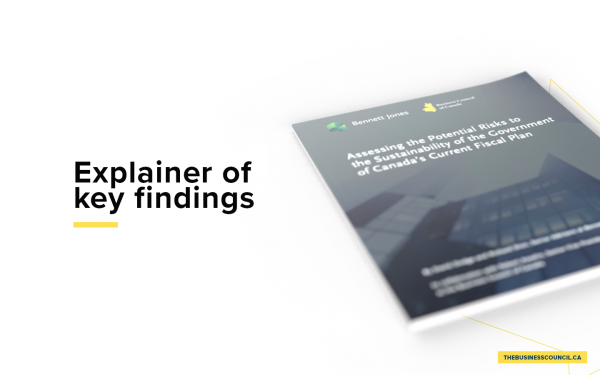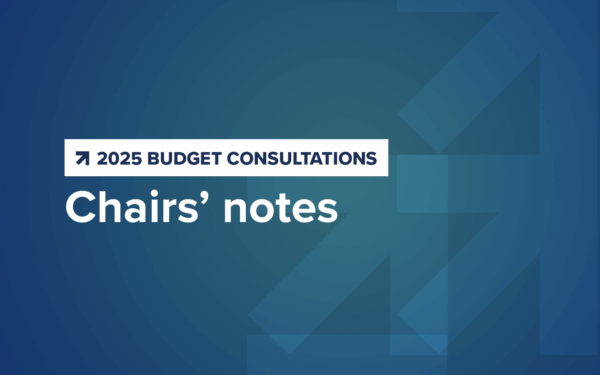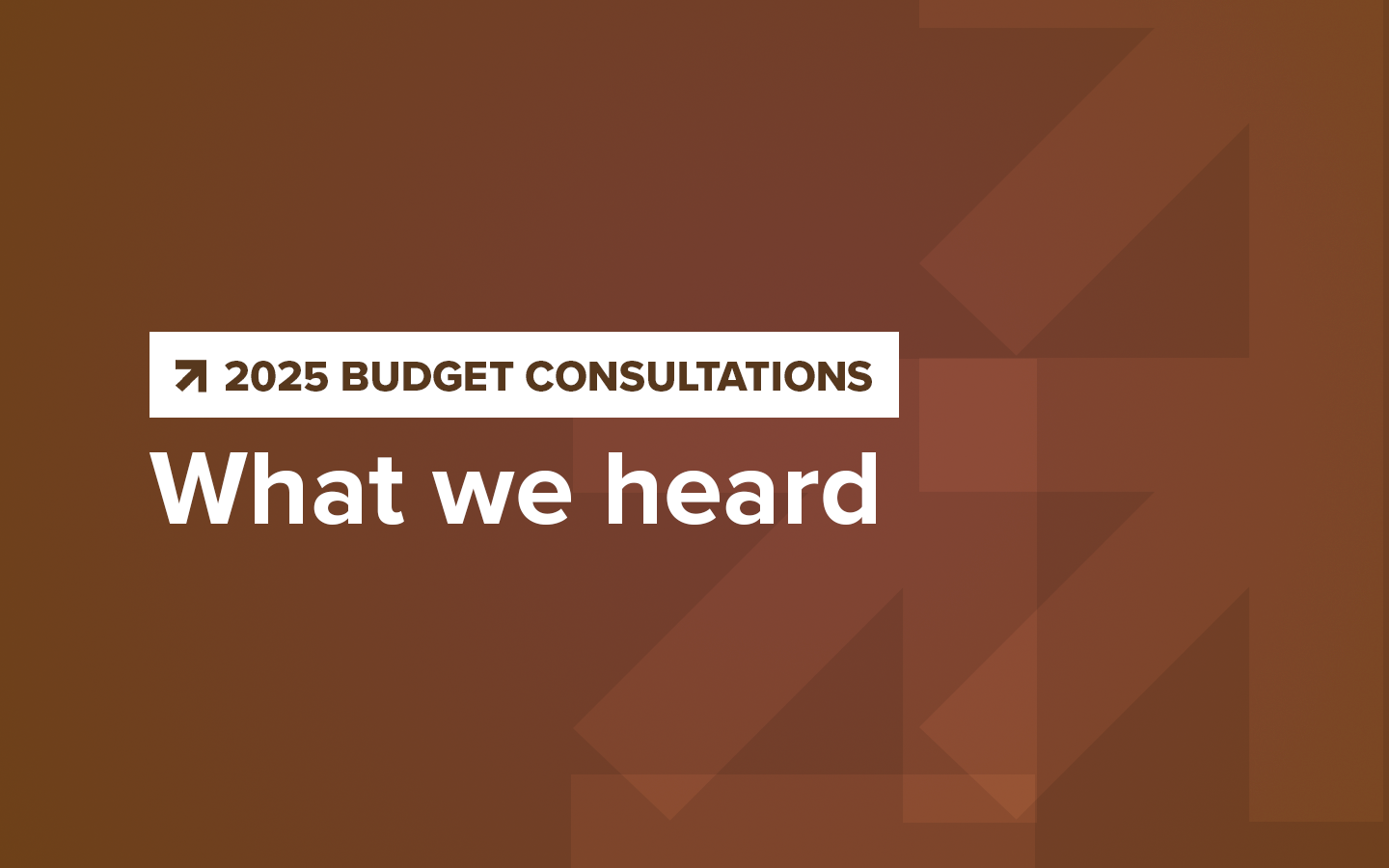Analyzing the federal government’s fiscal anchors
Why a third time won't be a charm
A brief history of fiscal anchors since 2020
In her first Fall Economic Statement (FES) as Finance Minister in 2020, Chrystia Freeland introduced a new fiscal “guardrail.” It aimed to anchor government spending to labour market outcomes. The “guardrail” would inform the government when to scale back post-COVID stimulative spending. When the job market recovered much faster than expected, the anchor quickly disappeared.
In Budget 2022, the declining debt-to-GDP ratio was reintroduced as the government’s fiscal anchor. But in 2022-2023 the ratio went up, not down. This is likely to be again the case for 2023-2024.
In last November’s FES, the federal government announced it will now be focused on the following fiscal objectives in preparing for Budget 2024:
- Maintaining the 2023-24 deficit at or below the Budget 2023 projection of $40.1 billion.
- Lowering the debt-to-GDP ratio in 2024-25, relative to the 2023 FES and keeping it on a declining track thereafter.
- Maintaining a declining deficit-to-GDP ratio in 2024-25 and keeping deficits below 1 per cent of GDP in 2026-27 and future years.
Fiscal implications of meeting the one per cent GDP target in 2026-2027
According to FES 2023, nominal Canadian GDP is forecasted to be $3.2 trillion for 2026, which would imply a deficit figure that would not exceed $32 billion to meet the 1 per cent target set out by the government.
To assess whether the 1 per cent of GDP deficit figure is a realistic fiscal target for 2026, we offer ten observations:
- Between 2017 and 2022, the federal government ran deficits averaging 1.4 per cent of GDP when adjusted for swings in economic activity.
- From budget 2016-2017 (the first budget of the Trudeau government) to budget 2023-2024, spending projections have gone from $291 billion for 2016-2017 to $496 billion for 2023-2024, or from 14.6 percent of GDP to 17.3 percent of GDP.
- In the 2016-2017 budget, the gap between revenues and expenditures projections for 2016-2017 was 0.2 percent of GDP (revenues at 14.4 percent of GDP versus expenditures at 14.6 per cent of GDP). This differential grew to 1.4 percent of GDP for 2023-2024 in the 2023-2024 budget (revenues at 15.9 per cent versus expenditures at 17.3 percent).
- In the post-Second World War era, the federal government has managed to record a deficit of less than 1 per cent of GDP only twice when spending exceeded the 17 per cent threshold. That was between 1996 and 1998 at the very start of a decade-long period of fiscal consolidation. In fact, deficits have averaged more than 4 per cent of GDP in years when spending has surpassed 18 per cent of GDP.
- Spending projections by this government have been extremely unreliable over the five-year forecast horizon. While the government keeps showing a declining deficit both in nominal value and in debt-to-GDP terms, the reality is more complicated.
Spending Projections (Billions $)
| Fiscal year | FES 2023 | FES 2022 | Budget 2022 | Differential between B2022 & FES 2023 |
|---|---|---|---|---|
| 2023-2024 | 496.3 | 493.1 | 436.7 | 59.7 |
| 2024-2025 | 521.9 | 504.8 | 441.6 | 80.3 |
| 2025-2026 | 540.7 | 515.3 | 453.9 | 86.8 |
| 2026-2027 | 554.5 | 523.7 | 461.5 | 93 |
As this table shows, $319.8 billion of new spending was added to the fiscal framework over four fiscal years from the April 2022 budget to the November 2023 fall economic statement. In less than two years spending projections increased considerably.
This amount would be much larger if we look back further in time.
For example, in Budget 2019, the government forecasted $429 billion in overall spending for 2024-2025. However, in last November’s fall economic statement the projected spending for 2024-2025 changed to $522 billion — a difference of $93 billion.
- The government is facing significant spending pressures going forward. First, the Liberal/NDP supply and confidence agreement includes a commitment to a national pharmacare program with an annual price tag that could be as high as $18 billion. Second, Canada is facing significant demographic headwinds which will have an impact on Old Age Security and health care costs. To this list we can add real pressures on defence spending, the energy transition and industrial policy, public R&D, as well as Indigenous reconciliation. It is unlikely the government can ignore any of these big policy issues. In addition, let’s not forget the production tax credit provided to automakers for new EV manufacturing. Once production ramps up in a few years, billions of dollars will be paid out on these credits.
All things being equal, the relative costs of government will be higher as we move forward. - Debt servicing charges will continue to be prohibitive for some time. Debt servicing is already taking 10.2 per cent of the government’s overall revenues. It is worth noting this is for past debt. This fiscal year the government is projected to spend more than $46 billion just to service its debt. To put that in perspective, debt servicing this year is just $3 billion less than the amount the government is sending to provinces and territories in health care transfers.
- The economic forecast is gloomy. Canada has avoided a recession so far in large part due to population growth through immigration. But a recession is still a possibility. The economic limitations ahead are not trivial: real GDP per capita is set to decline for the sixth consecutive quarter and productivity continues to be an Achilles heel for Canada. The likelihood of higher revenues for the federal government as a function of better-than-expected economic growth is not a high probability for the five-year economic forecast horizon.
- Canadians should know that the government’s ability to meet its new promise to keep deficits below 1 per cent of GDP in 2026-27 and future years would require a significant change of course and difficult decisions. Right now, the deficit is 1.4 per cent of GDP. Assuming the government does not introduce new taxes, and economic growth remains low as estimated by the Bank of Canada and international organizations, a 0.4 per cent reduction implies spending cuts of at least $12 billion per year, or around $50 billion over four years. Keep in mind that since the Trudeau government came into office, expenses have grown more than 5 per cent per year.
- Unforeseen events are always a big risk for fiscal planners. Over the last few years, we have experienced a global pandemic, extreme weather events, two wars and various geopolitical threats. Fiscal prudence is essential to help Canada prepare for the unexpected.
Conclusion
The Trudeau-Freeland record on fiscal guardrails or anchors speaks for itself. Since 2020, the federal government has never met a fiscal target it imposed on itself.
For the reasons enumerated above, it is very improbable it will meet its new anchor of 1 per cent deficit-to-GDP in 2026 and future years.











